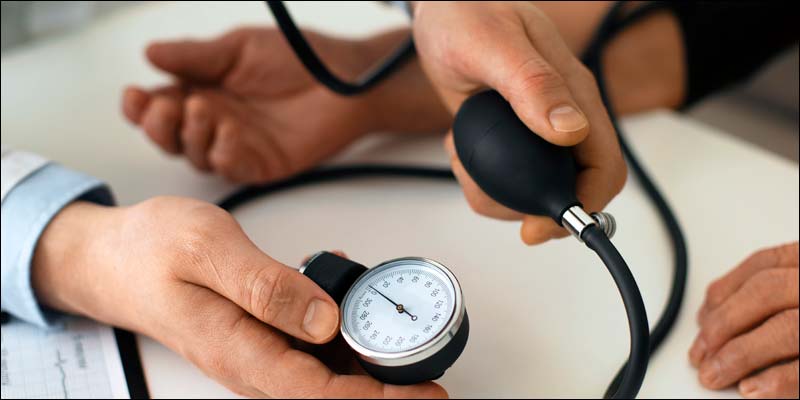Maintaining good blood pressure is essential for a healthy heart and overall well-being. Blood pressure (BP) is a critical indicator of your cardiovascular health, and managing it effectively can prevent serious health issues like heart disease, stroke, and kidney problems. In this comprehensive guide, we will explore everything you need to know about blood pressure, from understanding what it is to practical tips for maintaining optimal levels.
What is Blood Pressure?
Blood pressure is the force exerted by circulating blood against the walls of the arteries, the major blood vessels in your body. It is measured in millimeters of mercury (mm Hg) and recorded as two numbers: systolic pressure (the pressure when the heart beats) over diastolic pressure (the pressure when the heart is at rest between beats). For example, a reading of 120/80 mm Hg.
Understanding Systolic and Diastolic Pressure
- Systolic Pressure: This is the top number in a blood pressure reading. It represents the highest pressure in your arteries when your heart pumps blood.
- Diastolic Pressure: This is the bottom number. It represents the pressure in your arteries when your heart rests between beats.
Why is Good Blood Pressure Important?
Maintaining good blood pressure is vital for preventing a range of health issues. High blood pressure, or hypertension, can damage your arteries, heart, kidneys, and other organs. Conversely, low BP, or hypotension, can cause dizziness, fainting, and other complications.
Normal Blood Pressure

The normal blood pressure range for most adults is around 120/80 mm Hg. However, blood pressure can vary based on age, gender, and overall health. Here’s a quick reference:
- Normal: Less than 120/80 mm Hg
- Elevated: 120-129/less than 80 mm Hg
- Hypertension Stage 1: 130-139/80-89 mm Hg
- Hypertension Stage 2: 140 or higher/90 or higher mm Hg
- Hypertensive Crisis: Higher than 180/higher than 120 mm Hg (seek emergency medical attention)
Factors Affecting Blood Pressure
Several factors can influence your BP, some of which you can control, and others you cannot. Understanding these factors is crucial for managing your BP effectively.
Controllable Factors
- Diet: High salt (sodium) intake, high fat, and processed foods can raise BP.
- Physical Activity: Regular exercise helps maintain a healthy weight and reduces BP.
- Weight: Excess body weight increases the risk of high BP.
- Alcohol Consumption: Drinking too much alcohol can raise BP.
- Smoking: Smoking damages blood vessels and raises BP.
- Stress: Chronic stress can contribute to high BP.
Uncontrollable Factors
- Age: Blood pressure tends to increase with age.
- Family History: A family history of hypertension can increase your risk.
- Gender: Men are more likely to develop high blood pressure before age 55; women are more likely to develop it after menopause.
- Ethnicity: Certain ethnic groups, such as African Americans, have a higher risk of hypertension.
Symptoms of High and Low Blood Pressure
Recognizing the symptoms of abnormal BP is crucial for early intervention and management.
High Blood Pressure (Hypertension)
Hypertension is often called the “silent killer” because it may not cause symptoms until it has done significant damage. However, some people may experience:
- Headaches
- Shortness of breath
- Nosebleeds
- Flushing
- Dizziness
- Chest pain
- Visual changes
Low Blood Pressure (Hypotension)
Low BP is less common but can be equally concerning. Symptoms may include:
- Dizziness or lightheadedness
- Fainting
- Blurred vision
- Nausea
- Fatigue
- Lack of concentration
Diagnosing Blood Pressure Issues
Regular monitoring and check-ups are essential for diagnosing and managing blood pressure. Blood pressure is typically measured using a cuff placed around the arm, but there are also home monitors available for regular use.
Regular Check-ups
It’s important to have your BP checked regularly by a healthcare professional, especially if you are at risk of hypertension. During a check-up, your doctor may:
- Measure your blood pressure multiple times to confirm results.
- Review your medical history and risk factors.
- Conduct additional tests if needed (e.g., blood tests, urine tests, ECG).
Home Monitoring
Home BP monitors are a convenient way to keep track of your BP. When using a home monitor, ensure you:
- Use a validated device.
- Follow the manufacturer’s instructions.
- Measure your blood pressure at the same time each day.
- Keep a record of your readings to share with your doctor.
Lifestyle Changes to Maintain Good Blood Pressure
Lifestyle modifications are the first line of defense against high BP. Here are some effective strategies to maintain or achieve normal blood pressure:
Healthy Diet
A balanced diet rich in fruits, vegetables, whole grains, and low-fat dairy products can help reduce BP. Consider following the DASH (Dietary Approaches to Stop Hypertension) diet, which emphasizes:
- Eating more potassium-rich foods like bananas, oranges, and spinach.
- Reducing sodium intake to less than 2,300 mg per day (ideally 1,500 mg).
- Limiting alcohol consumption to moderate levels.
Regular Exercise
Engaging in regular physical activity strengthens your heart and helps manage your weight. Aim for at least 150 minutes of moderate-intensity exercise or 75 minutes of vigorous-intensity exercise per week. Activities like walking, jogging, swimming, and cycling are excellent choices.
Maintaining a Healthy Weight
Losing even a small amount of weight can significantly lower your BP. Focus on achieving a healthy weight through a combination of diet and exercise.
Limiting Alcohol and Quitting Smoking
Excessive alcohol consumption can raise your BP, so it’s important to drink in moderation. Additionally, quitting smoking improves overall cardiovascular health and lowers BP.
Stress Management
Chronic stress contributes to high BP. Techniques such as mindfulness, meditation, deep breathing exercises, and yoga can help manage stress effectively.
Medical Treatments for Blood Pressure Management
In some cases, lifestyle changes alone may not be sufficient to control blood pressure, and medication may be necessary. There are several types of medications available, each working differently to lower BP.
Common Medications
- Diuretics: Help kidneys remove excess salt and water.
- Beta-blockers: Reduce the workload on your heart and open blood vessels.
- ACE Inhibitors: Help relax blood vessels by blocking the formation of a hormone that narrows blood vessels.
- Calcium Channel Blockers: Prevent calcium from entering the heart and blood vessel muscle cells, relaxing blood vessels.
- ARBs (Angiotensin II Receptor Blockers): Block the action of a hormone that causes blood vessels to narrow.
Combination Therapy
Sometimes, a combination of medications may be required to achieve optimal BP control. Your doctor will determine the best treatment plan based on your specific needs and health status.
Monitoring and Adjusting Treatment
Blood pressure management is an ongoing process that requires regular monitoring and adjustments. Keep in regular contact with your healthcare provider to ensure your treatment plan is effective. This may involve:
- Periodic blood pressure checks.
- Regular lab tests to monitor the effects of medication.
- Adjustments to your medication dosage or type as needed.
Understanding Complications of Uncontrolled Blood Pressure
Uncontrolled BP can lead to several serious health complications, emphasizing the importance of maintaining normal blood pressure.
Complications of Hypertension
- Heart Attack and Stroke: High BP can cause hardening and thickening of the arteries, leading to heart attacks or strokes.
- Aneurysm: Increased BP can cause blood vessels to weaken and bulge, forming an aneurysm.
- Heart Failure: The heart can become enlarged and weak, leading to heart failure.
- Kidney Damage: Hypertension can damage the blood vessels in the kidneys, affecting their ability to filter waste from the blood.
- Vision Loss: High blood pressure can damage the blood vessels in the eyes, leading to vision problems.
- Metabolic Syndrome: A cluster of disorders, including high blood pressure, high blood sugar, and abnormal cholesterol levels, increasing the risk of heart disease and diabetes.
Complications of Hypotension
- Falls and Injuries: Dizziness and fainting can lead to falls and injuries.
- Shock: Severe hypotension can lead to shock, a life-threatening condition where organs do not receive enough blood.
- Heart Problems: Inadequate blood flow can cause the heart to work harder, leading to heart problems.
Conclusion
Maintaining good blood pressure is crucial for your overall health and well-being. By understanding the factors that influence blood pressure and implementing lifestyle changes, you can effectively manage and maintain healthy blood pressure levels. Regular monitoring and consultation with your healthcare provider are essential to ensure your blood pressure remains within the ideal range. Remember, a healthy heart leads to a healthy life, so take the necessary steps today to keep your BP in check.
FAQs
Q1. What is normal blood pressure?
The latest guidelines define normal blood pressure as a reading below 120/80 mm Hg.
Q2. What is the low BP range?
Low blood pressure is defined as below 90/60 mm Hg. For some people, this is their normal reading and not a cause for concern.

